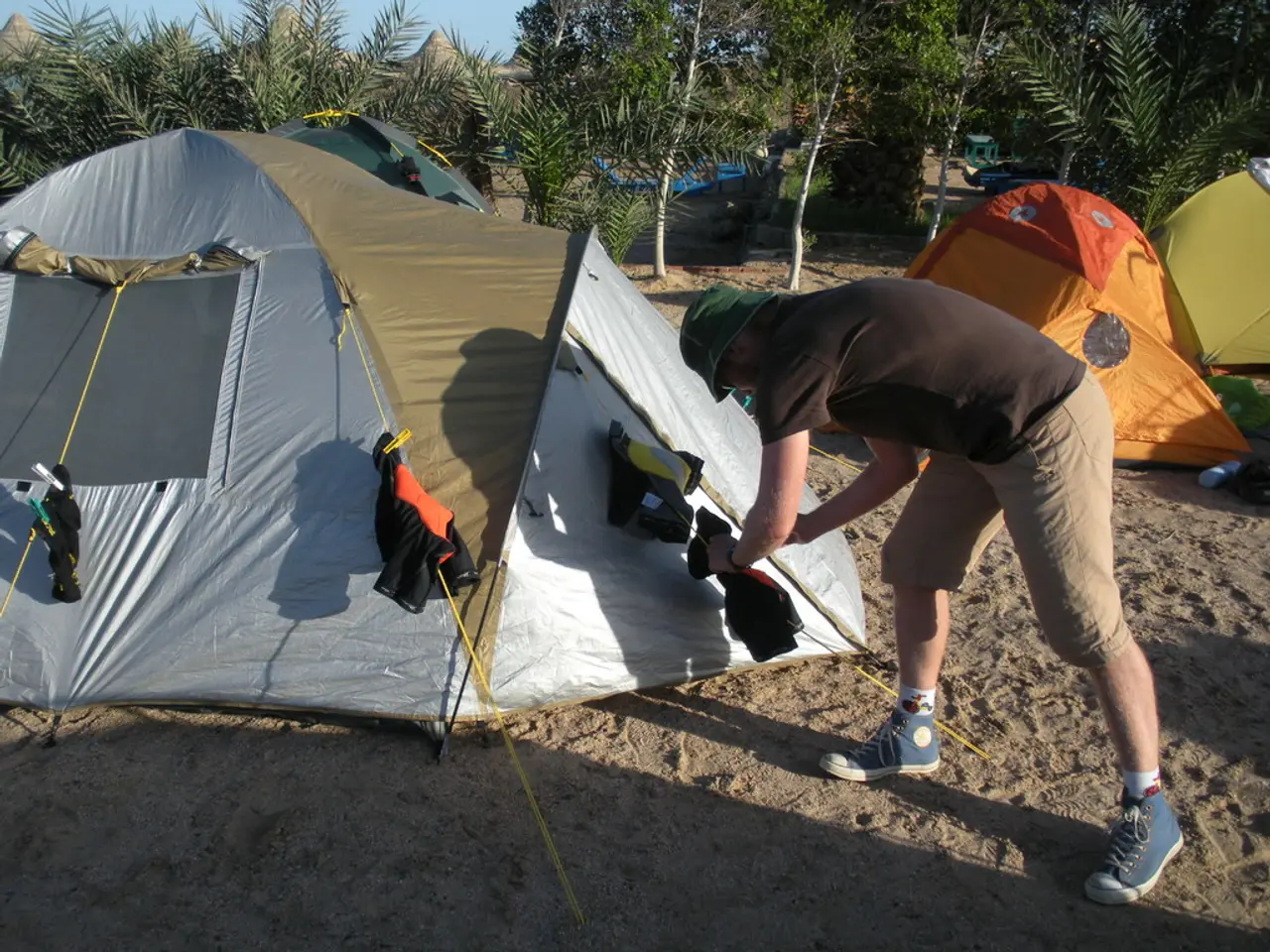Wilderness Trauma Research Methodology: A Practical Field Framework for Primary Surveys in Untouched Territories (CABCDE(g))
In the realm of emergency care, the World Extreme Medicine (WEM) faculty has adapted the traditional ABCDE approach to better suit the challenges of austere, resource-limited, and often hostile environments. This modified model prioritizes contextual awareness, resource improvisation, and prolonged care planning to address life threats in remote settings.
The WEM model starts with Scene Safety & Shelter (S), followed by Catastrophic Haemorrhage (Big C), ABCDE(g) (Adapted Trauma Survey with Glucose Consideration), Breathing, Cervical Spine, Circulation, Disability, and Exposure.
- Catastrophic Haemorrhage (Big C): This stage focuses on immediate control of exsanguinating haemorrhage before addressing the airway. Reassessments for re-bleeding are frequent due to long waits for evacuation in remote care. If trained and available, tranexamic acid (TXA) may be considered.
- ABCDE(g): The adapted model integrates a Glucose Consideration within the trauma survey. Hypoglycaemia can mimic reduced consciousness or stroke, so glucose is considered in the Disability section.
- Airway: Maintaining a clear airway is emphasized while considering the possibility of a cervical spine injury. Manual airway maneuvers, basic adjuncts like OPAs or NPAs, and the use of jaw thrust, head-tilt-chin-lift are employed, depending on the situation.
- Circulation: Monitoring radial pulse and skin color is part of assessing for internal haemorrhage. Signs of bleeding in the chest, abdomen, or pelvis are checked for internal haemorrhage.
- Disability: Pupils and motor/sensory function are assessed, and AVPU is used as the primary scale for rapid neurological assessment.
- Exposure: In remote settings, exposure assessment is critical not only for injury identification but also for prevention of hypothermia or other environmental insults. The WEM model may integrate exposure management earlier or throughout the assessment rather than as a final step alone.
- Breathing: The Breathing section does not specify any new procedures or considerations beyond maintaining the airway.
- Cervical Spine: In the Airway section, the importance of considering a possible cervical spine injury is emphasized.
It's essential to note that the WEM model prioritizes dynamic, context-aware assessment that integrates environmental risks and logistical constraints, often requiring improvisation and damage control resuscitation methods over definitive care during the primary survey.
The WEM-delivered training in conflict or extreme environments, such as Eastern Ukraine, stresses practical skills under pressure, rapid decision-making, and flexibility in applying ABCDE principles when evacuation is delayed, which contrasts with hospital-based ATLS where rapid definitive care is available.
While no single official detailed WEM ABCDE protocol was found, these points reflect the general distinction between WEM-adapted trauma care and traditional ATLS-based ABCDE training.
- In remote settings, immediate control of life-threatening bleeding, or catastrophic haemorrhage, is crucial before addressing airway issues, as re-bleeding is a common concern due to long evacuation wait times.
- The WEM model modifies the traditional trauma survey by integrating a glucose consideration within the ABCDE phase, as hypoglycaemia can resemble reduced consciousness or stroke.
- Maintaining a clear airway is a priority in the WEM model, while also considering the potential risk of a cervical spine injury.
- Monitoring for signs of internal bleeding, such as changes in pulse and skin color, is a key aspect of assessing circulation in the WEM model.
- In remote environments, disability assessment goes beyond neurological function to include rapid environmental risk analysis, incorporating prevention of hypothermia and other environmental insults.
- Exposure management in the WEM model may be integrated earlier or throughout the assessment, rather than as a final step, due to the importance of injury identification and prevention in austere environments.
- The Breathing section of the WEM model focuses on maintaining the airway, but no new procedures or considerations beyond this are specified.
- The WEM model places emphasis on a cervical spine injury when assessing the airway due to potential risks in austere and resource-limited environments.
- The WEM model's training in extreme or conflict zones, such as Eastern Ukraine, focuses on practical skills under pressure, rapid decision-making, and flexibility in applying the ABCDE principles when evacuation is delayed, which contrasts with the hospital-based ATLS where rapid definitive care is immediately available.
- Although no official detailed WEM ABCDE protocol was found, the general understanding is that WEM-adapted trauma care prioritizes dynamic, context-aware assessment, incorporating environmental risks and logistical constraints, often requiring improvisation and damage control resuscitation methods over definitive care during the primary survey.
- The WEM model further extends its reach into sectors such as health-and-wellness, fitness-and-exercise, science, and space medicine, preparing practitioners for diverse climates and challenges, including desert wilderness survival and disaster response situations.




